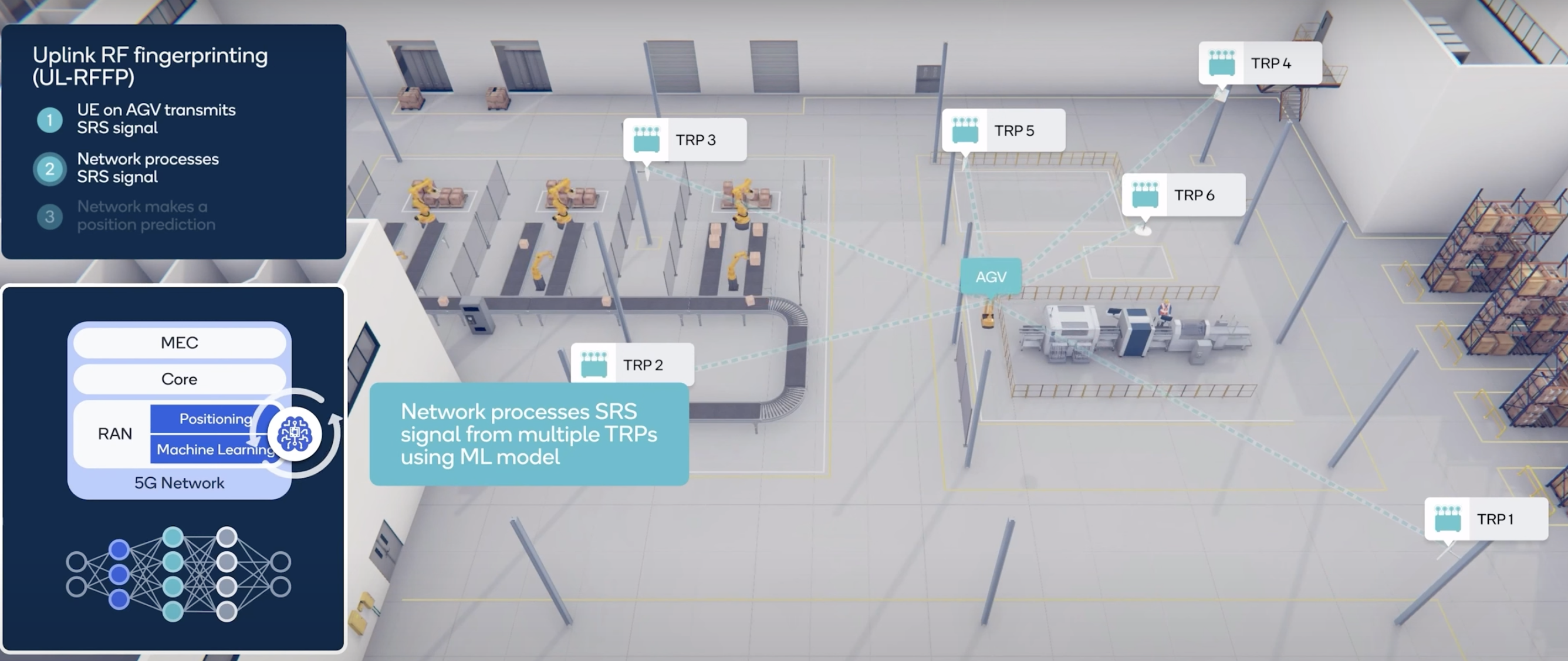5G’s higher throughput and lower latency positions the technology as a pillar of industrial IoT, promising to bring about new applications and expand the boundaries of what is possible within an enterprise setting. At its San Diego campus, Qualcomm highlighted the growing need for new positioning capabilities and architectures, and simplified devices as industrial 5G networks continue to be rolled out and more IoT devices are turned on and use cases developed as a result.
Machine learning enhances industrial positioning
The majority of these newly connected industrial IoT devices will be indoors, which as Qualcomm Technologies’ Senior Director of Technology Xiaoxia Zhang pointed out, poses a potential problem when it comes to ensuring accurate IoT asset positioning.
“For indoor, […] you are talking about centimeter-level accuracy, […] whereas for outdoor the requirement is much looser,” explained Zhang. “The other [difference] is for indoor, you have lots of objects, lots of reflectors. You can have more cases of non-line of sight scenarios.”
In other words, indoor environments are simultaneously much harsher and have more stringent requirements. For Qualcomm, machine learning offers a promising solution to industrial IoT positioning challenges by enabling UL RF Fingerprinting (UL-RFFP), a technique that creates what the company calls an RF map.
In a demonstration of UL-RFFP, Zhang showed how a user equipment (UE) or base station transmits sounding reference signals (SRS) that are processed by the network, and then, using ML, the network makes a position prediction.
“The RF map is created based on the ground truth along with the corresponding channel measurements. Using that, the network is able to build a neural network,” Zhang said. “Because RF fingering printing is based on the RF map […] it’s actually irrelevant or agnostic if you have line of sight or non-line of site environments.”
Even if the environment has lots of non-line of sight components, she said, you are still able to achieve “very good accuracy” as long as the RF map is developed from the correct input and criteria. Further, even if the industrial environment were to keep changing, Qualcomm Technologies’ R&D team has established several techniques to keep refining the neural network model, allowing it to adapt with the environment.
Open RAN framework for 5G industrial networks
Qualcomm also demonstrated how it’s using the Open RAN framework to enhance industrial 5G networks. The company showcased how RAN disaggregation adds flexibility and scalability to industrial networks, as well as how the RAN Intelligent Controller (RIC) — a software-defined component of Open RAN architecture responsible for controlling and optimizing RAN functions — is a key enabler of intelligent coordinated multipoint (CoMP).
“Typically when we do CoMP, if you do not add any smartness […] you’re going to have multiple RUs serving the same device, either in downlink or uplink or both,” said Zhang. “That comes with a network resource utilization that is not very efficient.”
Qualcomm is using the RIC to dynamically change the serving cluster for the given device with low latency despite the disaggregated architecture, so that only the minimal number of RUs needed to maintain 99.9999% reliability, or ultra-reliability, is used.
Reduced capability devices or NR-Light
3GPP Release 15 and 16 introduced 5G NR, which established a future-proof framework that serves millions of mobile broadband devices. Now Release 17 is taking this a step further with a new set of devices called NR-Light or RedCap NR to address a different set of IoT use cases. As Yeliz Tokgoz, principal engineer and manager at Qualcomm Technologies, demonstrated at the company’s San Diego campus, the NR-Light specification will see a scaled down 5G bandwidth from 100 MHz to 20 MHz support in the sub-7 GHz bands and a reduction in the number of antennas.
“When we talk about the IoT use cases we are addressing with the NR Light devices,” Tokgoz said, “it’s the security cameras, the intelligent sensors — the devices that don’t require the large amount of data throughput that eMBB devices need, but they still have reasonable throughput and latency requirements.”
Tokgoz added that beyond Release 17, Qualcomm expects NR Light to scale down to even smaller bandwidth and add additional support for features like sidelink and positioning to better address an ever wider range of use cases.
From the devices themselves all the way down to the foundational architecture, industrial IoT is in the midst of a massive transformation.
Watch demonstrations of:
- OTA time-sensitive networking, including a RAN Intelligent Controller supporting Coordinated Multi-Point as a RIC app.’
- Industrial precise positioning using OTA testbeds running in the 3.75 GHz and 60 GHz bands.
- NR-Light capacity simulation and how 5G can be enhanced to support broader coverage for low-power IoT devices.
For a deeper look at all of Qualcomm’s MWC22 demos, visit this resource hub.

